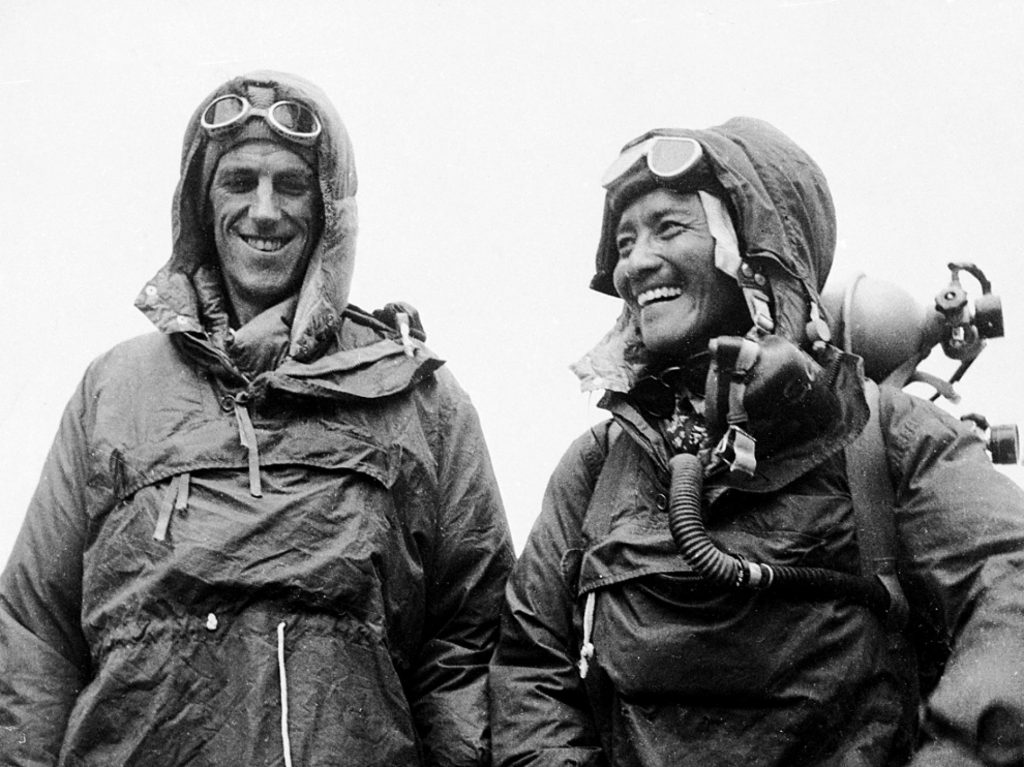In this article, we will try to cover the amazing tourism history of Nepal. History of Tourism In Nepal runs back when there was no habitable Kathmandu valley. It is believed that a Chinese tourist Manjhu Shree came to Nepal and chopped the Chovar hill and drained out all the water from the Valley.
History of Tourism in Nepal is as interesting as that of Europe. It’s like a thrilling movie you won’t be able to leave in the midway.
This History of Tourism in Nepal article might be boring and long for some users. In that case, you can navigate to the button below and surf the desired heading.
The history of tourism in Nepal dates back to the 1950s when the country first opened its borders to foreign visitors. Initially, tourism in Nepal was focused on trekking and climbing in the Himalayas, as the country is home to eight of the world’s highest peaks, including Mount Everest. The first successful ascent of Mount Everest by Sir Edmund Hillary and Tenzing Norgay in 1953 brought international attention to Nepal and helped to establish it as a destination for adventure tourism.
In the 1960s and 1970s, tourism in Nepal began to diversify, as visitors started to come to the country for other reasons such as cultural tourism, eco-tourism, and spiritual tourism. The country’s rich cultural heritage, including its temples, stupas, and traditional villages, as well as its diverse natural beauty, began to attract more and more visitors.
In the 1980s and 1990s, tourism in Nepal faced several challenges, including political instability and civil war. This resulted in a decline in the number of visitors to the country. However, in the early 2000s, the government of Nepal implemented several measures to promote tourism and improve the country’s infrastructure, which helped to boost visitor numbers.
In recent years, tourism in Nepal has been growing rapidly, with the number of visitors to the country increasing each year. The country has become a popular destination for adventure tourism, trekking, and mountaineering, as well as for cultural and spiritual tourism. The government has been putting a lot of effort to promote sustainable tourism in the country.
Overall, the history of tourism in Nepal has been marked by both challenges and opportunities, and the country has been working to develop its tourism industry in a sustainable way that benefits both the country and its visitors.
Contents
Tourism History Overview
The tourism industry is one of the rapidly growing industries in the world, and the same is the case with Nepal. After agriculture, tourism is the next important industry in Nepal.
Hotel businesses, travels and tours, and other services related to tourist enjoyment and facilitation are called tourism industries.
Many nations in the world have earned a lot of money from the tourism industry. From the perspective of the tourism industry, Nepal also has a great potentiality to develop as a trending tourism spot. Nepal is significant for natural beauty, religious, and cultural heritage to attract the tourist of the world.
The European tourist had been started to come to Nepal since the period of Malla. The flow of foreign tourists into Nepal increased after the establishment of the tourism department in the 2016 BS. Nearly 6,000 tourists arrived in Nepal in 1960 AD. This figure increased year by year, and it reached 4,90,000 in 1999 AD. A period of one decade after this time, because of the internal conflicts in the country, the rate of tourists arrival decreased.
However, again after 2009 AD, Nepali tourism caught the league again, and there was a significant increase in tourists flow in Nepal.
In the past, to attract the tourists and to increase the flow of tourists, a program like visit Nepal 1998 and destination Nepal was launched. Now, after the establishment of the provisional government, they are trying to develop their own strategies to attract the tourist in their respective provinces. In the tenth five-year plan, it is mentioned that Nepal would be established as the central tourist spot, extend its air services to attract tourists from SAARC countries as well as from China. However, because of the political instability in the country, those objects could not be carried out well.
| Year | Number of international tourists arriving in Nepal | % change from previous year |
| 1993 | 293,567 | -12.2% |
| 1994 | 326,531 | +11.2% |
| 1995 | 363,395 | +11.3% |
| 1996 | 393,613 | +8.3% |
| 1997 | 421,857 | +7.2% |
| 1998 | 463,684 | +9.9% |
| 1999 | 491,504 | +6.0% |
| 2000 | 463,646 | -5.7% |
| 2001 | 361,237 | -22.1% |
| 2002 | 275,468 | -23.7 |
| 2003 | 338,132 | +22.7% |
| 2004 | 385,297 | +13.9% |
| 2005 | 375,398 | -2.6% |
| 2006 | 383,926 | +2.3% |
| 2007 | 526,705 | +37.3% |
| 2008 | 500,277 | -5.0% |
| 2009 | 509,956 | +1.9% |
| 2010 | 602,867 | +18.2% |
| 2011 | 736,215 | +22.1% |
| 2012 | 803,092 | +9.1% |
| 2013 | 797,616 | -0.7% |
| 2014 | 790,118 | -0.9% |
| 2015 | 538,970 | -31% |
| 2016 | 753,002 | +40% |
| 2017 | 940,218 | +24.8% |
| 2018 | 1,173,072 | +24.8% |
| 2019 | 801,000,000 | +8.24% |
| 2020 | 238,000,000 | -70.29% |

By these data, we can conclude that in the period of internal conflicts earthquake and blockade by India the flow of tourists was decreased, nonetheless, in the normal time, it was in the increasing trends.
The increase of the tourists coming helps to increase income, employment and the revenues of the country. It also helps to develop the rural areas of the country and the development of the industries as well. Usually, the tourist from India, Europe, America, Japan, Korea, and China come to Nepal. To increase the number of tourists in Nepal first it should develop its physical infrastructures like hotels, transportation, rectification in the civil aviation scenario, the advertisement of Nepal in the foreign countries, the care and the revamp of the cultural sites are necessary. The ministry of culture tourism and civil aviation (MoCTCA) tourism department, tourism development board, tourism infrastructure development plan, Nepal airline corporation are some organizations related to developing the tourism industry in Nepal.
Also Read: Folk Songs of Nepal
In the fiscal year, 2063/2064 1.2% of the total GDP was contributed by the tourism industry in Nepal. Likewise, in the year 2014, 1.97% of the total GDP was contributed by the Tourism industry in Nepal.
Tourism is a Goose for Nepal which will lay golden eggs if implemented and planned well.
Ancient History of Tourism In Nepal
The tourism history of Nepal began from the date when Manjushree, a Buddhist monk from Tibet, visited Kathmandu, Nepal. Manjushree is believed to be the first tourist in Nepal. It is believed that he came to Nepal and chopped the Chovar hill, drained all the water out of the valley and made the valley suitable for Living.
Ancient King Ashoka from India came to Lumbini and raised Ashoka Pillar. He later visited Nepal frequently and constructed many monuments of similar types. Such monuments of him hold great historical importance.
During the Malla and Lichhivi period, Nepal got to see golden progress in the tourism industry. The Lichchhavi period started in 400 A.D. Many monuments and buildings of great value were constructed then, which helped and is still helping Nepal to gain enormous popularity. Kailashkut Bhawan, Managriha and Bhadradhiwas Bhawan of great popularity and historical importance were built back in that period.
Also Read: Over Tourism In Nepal
The Malla period is also very important in Nepali tourism history. The Mallas ruled over Nepal from around 750-1480 A.D. Plenty of magnificent and eminent pagodas, royal residences and houses reflect the richness of art and architecture during the Malla period.
The marital relations between Princess Bhrikuti, daughter of King Amshuvarma, of Nepal and Srong-sten Gampo, the king of the northern state Lhasa in 592 A.D. gave rise to a strong relationship between Nepal and China. Also, it heightened the China-Nepal tourism relation to the next level. After that, Nepal was established as the only route to visit China via Lhasa and travel from China to India via Lhasa for a certain period. This marital relationship ended up favoring Nepal to increase visitors from both countries.
Later, with the reign of the Malla kingdom, people from the western countries began coming to Nepal with an aim to spread Christianity. In1737 A.D, King Jaya Prakash Malla gave written permission to Christians for spreading Christianity which increased a lot number of Christian tourists.
The Lichchhavis and the Malla kings brought about total conversion in the customs, tradition, and lifestyle of the Nepali people. The present cultures and customs of the Nepali communities and the various festivals celebrated around the year have their origins in the Lichchhavi and the Malla periods.
During those early days of Nepal, Chinese, Tibetan, and Indians tourists used to visit Nepal with religious and commercial purposes. Indian tourists were Hindus and were likely to visit similar destinations. They used to visit religious destinations like Pashupatinath, Baraha Kshetra, Muktinath, Gosainkunda, etc.
Likewise, Chinese tourists visited Lumbini.
History of Tourism In Nepal After Unification
King Prithvi Narayan Shah unified the disseminated states of Nepal into unified Nepal in 1767 A.D. which gave a new dimension and way of tourism in Nepal.
In 1792 Captain Kirk Patric visited Nepal which also helped much to promote Tourism of Nepal. He was a soldier from the British East India Company and was on a mission for collecting data and facts about Nepal. But after leaving Nepal, he wrote a book about Nepal named, “An Account of the Kingdom of Nepal” which helped Nepal a lot to promote its tourism in foreign countries.
Later, the Sugauli treaty was signed in 1816 A.D. between the Nepal Government and the British East India Company which favored Nepal in the promotion and furtherance of tourism in Nepal.
Also Read: Negative Impacts of Tourism In Nepal
Dr Wallich, A British Resident, was elected in Kathmandu for developing Nepal’srelationship with British India. This resulted in the regular visit of British personalities to Nepal. Rana Prime Minister Jung Bahadur’s visited Britain in 1850-51 A.D. which again worked amazingly to promote Nepali tourism internationally.
During this time interval, many botanists and naturalists like Sir Brian Hodgson FRS, and Sir JosephHooker FRS visited Nepal, which helped to promote the natural tourism of Nepal worldwide.
During the era of Prime Minister, Bir Shumsher different famous peoples from Europe like Silva Levy and Percival London visited Nepal.
Furthermore, King George V and the Prince of Wales came to Nepal for hunting tigers in the terai forests in 1911 and 1921 respectively which again helped in boosting the popularity of tourism in Nepal.
Later the Rana autocracy affected tourism in Nepal for 104 years. During that period, Nepal was a ‘forbidden land’. Only a few small traders and Indian pilgrims were allowed to enter in Nepal at Rana autocracy.
History of Tourism In Nepal After 1950
After the arrival of popular democracy in 1950, Nepal began to build up the unique parts of social, financial and political life. Since that time, the entryway of Nepal has stayed open to outsiders who were longing to visit Nepal.
After, democracy foreigners were embraced by the Nepal Government by providing them a tourist visa. Before, the permits were provided by East India Company under the guidance of the British Government.
Tourism in Nepal after 1950 was popular due to the mountains of Nepal. In fact, all the major mountains of Nepal were scaled during that period.
Mt. Annapurna I, Mt. Everest, Mt. Cho Oyu, Mt. Makalu, Mt. Kanchenjunga, Mt. Manaslu, Mt. Lhotse, and Mt. Dhaulagiri were scaled in 1960 only. So we can say 1950’s as one of the golden periods of tourism in Nepal.

In 1955 Nepal became a member of the United Nations Organization (UNO) which helped Nepal to promote tourism at an international level. In the same year, 1955 world-renowned Thomas Cook and Sons brought a group of 60 tourists for a Nepal travel.
After the triumphant climbing of the highest peak in the world, Nepal started to be a new destination for immigrants. In 1956, under the supervision of French George Lebrec, National Planning Council on Tourism was established and started to boost tourism.
The same year i.e. 1956 National Tourist Development Board was also established. In 1958 Royal Nepal Airlines Corporation (Currently known as Nepal Airlines Corporation) first started its operation as Nepal’s first aviation service provider. This particular event changed the aviation scenario in Nepal.
In the late 1960s and 1970s, hippies started to move to Nepal. During those days, Nepal was famous for two things, Hippies and Marijuana. The hippies were attracted due to the free availability of hashish and marijuana in Nepal. But in 1973 the government banned the selling of marijuana and hashish which in turn affected the inflow of hippies in Nepal.

In the year 1962, for the first time, the Tourism Department started keeping the statistics of the foreign tourists getting into Nepal.
In the year 1972, Including the joint partnership of UNDP and ILO, Hotel Management and Tourism Training Centre was established to generate trained human resources in the tourism and hospitality area. This institution was renamed as Nepal Academy of Tourism and Hotel Management (NATHM) in 1999.
Also Read: Sustainable Tourism In Nepal
In 1998, Nepal Tourism Board was instituted to promote Nepal as an attractive tourist destination. The same year, Nepal celebrated “Visit Nepal 98” to encourage Nepal tourism.
From the year 1999 tourist inflow started to fall because of a decade long Maoist insurgency. Other more trends like hijack of Indian Airlines fleet from Tribhuvan International Airport in 1999, the Royal Massacre in 2001 affected the Tourism industry of Nepal negatively.
The historical Peace treaty agreement between Maoist and Government in 2006 brought again revolutionary changes in the tourism industry of Nepal.
In 2011, Tourism Year was celebrated for the second time in Nepal.

Also Read: Risks In Tourism Industry
Modern Tourism In Nepal
Currently, plans and policies are started getting designed for creating a better environment for the growth of the tourism sector in Nepal. Things are changing in Nepal currently. The tourism scenario in Nepal is also changing its pace. Nepal is getting better in terms of infrastructure. The government is giving more importance and emphasis to it than before. The tourism industry is becoming grande with new touristic places, grande hotels, and resorts, good roads and new international airports (ongoing). The number of people involved in this industry is increasing. Institutions for teaching and learning tourism business is also rising. After Nepal adopted federalism, the Tourism industry is now being managed at the locale level. Every province and state can execute their ideas and plans to make the tourism industry even better from the locale level.
Refrences
Shrestha, H. P., & Shrestha, P. (2012a). Tourism in Nepal: A Historical Perspective and Present Trend of Development. Himalayan Journal of Sociology and Anthropology, 5, 54–75. https://doi.org/10.3126/hjsa.v5i0.7039







